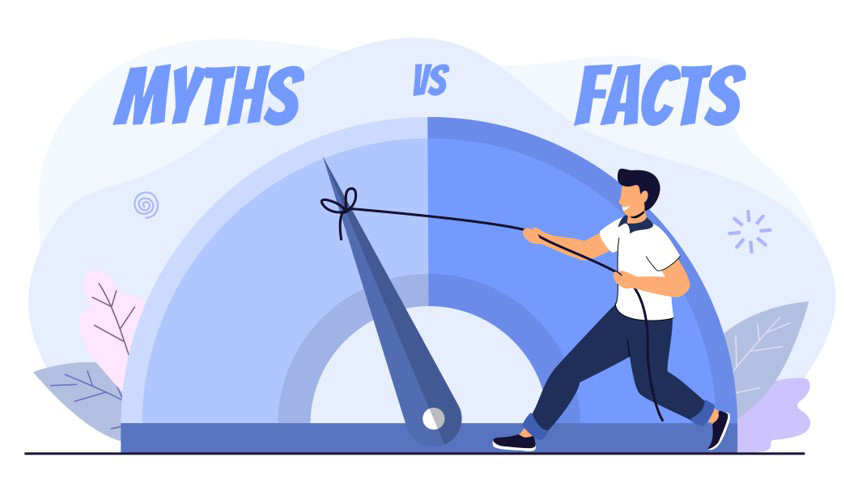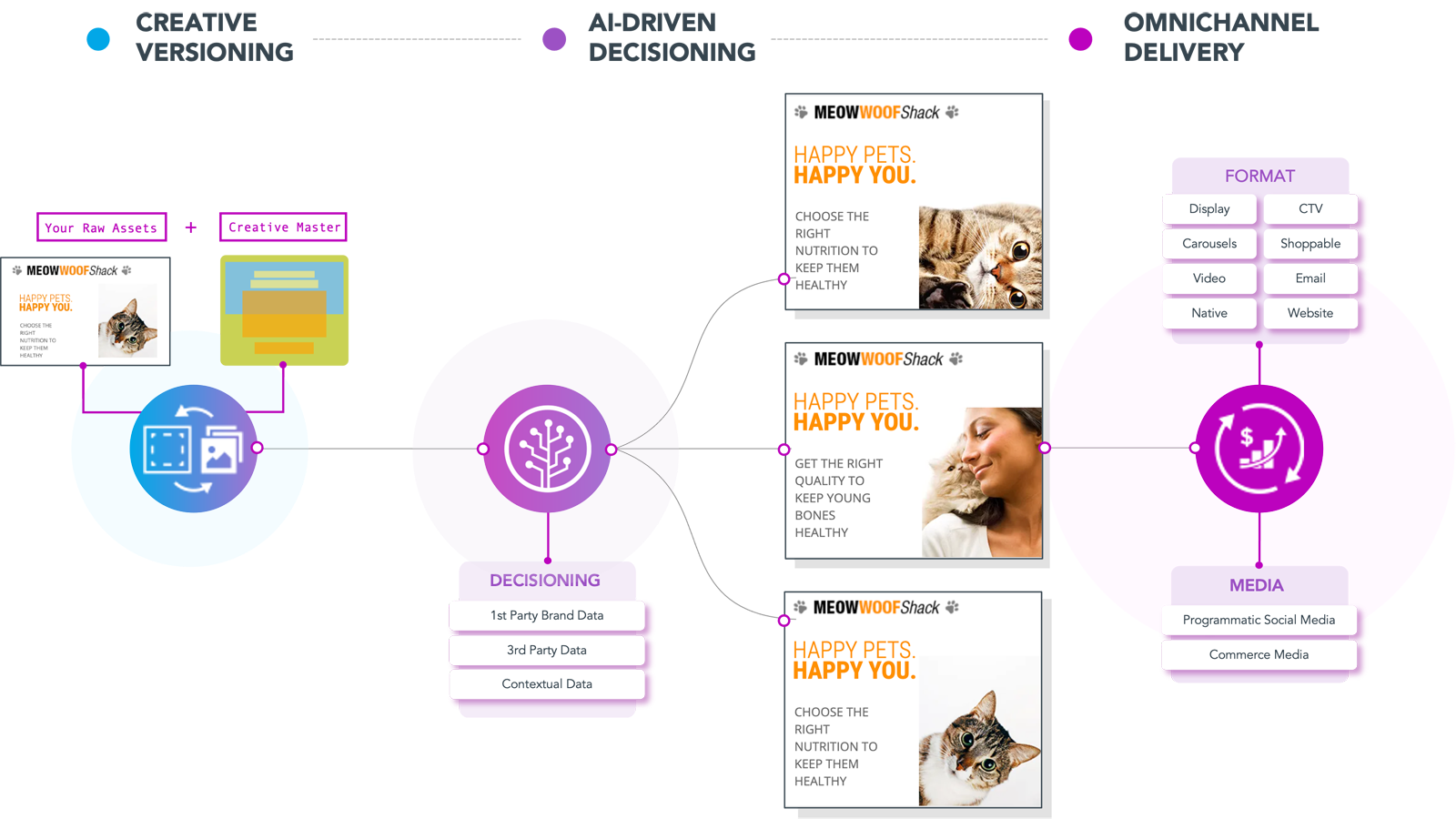Increasingly more consumers expect personalization. They want ads that take into account who, what, and where they are. Without personalized elements, they start to ask: why this ad? They’re more likely to ignore it and move on.
In a recent Salesforce research, 66% of consumers want companies to understand their individual needs.
In the world of digital marketing and advertising where brands seek to serve precise and relevant messages and offer to the right audience at the right time through the right channel, Dynamic Creative Optimization (DCO) is becoming increasingly mainstream for delivering hyper personalization in digital marketing. It’s how you get ads and email or website content that is relevant to each individual user, increasing the likelihood of a conversion.
That being said, some brands are wary of it, and that’s because for them, it’s synonymous with extra labor: years of poor or no automation in the so-called “DCO” has left these brands with a sour impression of what should be considered their greatest asset.
Brands familiar with smart DCO automation see dramatically improved results while cutting down significantly on creative costs and ad ops labor.
More recently, in the uncertain economic environment, brands are waking up to the value of this technology. Brands familiar with smart DCO automation see dramatically improved results while cutting down significantly on creative costs and ad ops labor. But for those that are early in the personalization journey, will they know the difference among offerings in the market–specifically, powered by humans vs. true automation–to reap the benefits?
Let’s take a moment to address the most common myths or misconceptions of DCO. But before explaining how in more detail, it’s important to understand exactly what it is.
What is dynamic creative optimization (DCO)?
Definitions will vary from vendor to vendor, so we’re going to define DCO by what it should be to live up to its full potential.
Simply put, DCO is a marketing technology that automates the entire spectrum of creative or content variations, data-driven decisioning, approvals, workflows such as asset and tag management, product recommendation, analytics and sales attribution.
Brands that are new to this technology can start with the more basic functions such as automating content versions and brands that are more experienced can use a wide range of consented first-party and contextual data to deliver hyper-personalized experiences to individual consumers. Put simply, it’s about getting the right message to the right person at the right time.
To understand what DCO means, you need to first know the power of automation for personalizing content at scale, across all channels. Such automation enables precise and relevant messaging to every individual consumer during those micro moments of purchase intent. It takes in user signals–for example, from first-party data–combined with contextual data and auto-matches specific creative elements to be relevant to the user. Thousands of variations are created on the fly with a real-time decisioning engine to more precisely match the user, all from one creative master file.
Here’s a quick overview of how Jivox uses DCO and automation to scale personalization.
Jivox DCO At-A-Glance
Creative/content automation
To scale personalization, brands can’t individually create thousands of variations to match with users. That process is far too labor intensive. Creative/content automation makes all the elements of an ad swappable, so that one master file produces thousands of variations automatically based on user and contextual signals.
Workflow automation
DCO automation generates trackers and tags automatically and syncs with other programs to enable remarketing or downstream analytics by removing redundant work. Given the amount of creative variations in a personalized campaign, automation is a crucial feature here to avoid a daunting amount of manual work.
Performance Optimization is where the content is personalized automatically based on the best performing content variation(s) in a campaign–a process that can use sophisticated AI and machine learning algorithms.
Not all DCO platforms are created equal
DCO platforms in the market today come in many different levels of automation. A good number of Creative Management Platforms (CMPs) provide automation but only with creative versioning. And many more still rely on manual labor to offer so-called “personalized” content. There are also other platforms serving primarily as ad servers.
DCO platforms in the market today come in many different levels of automation.
Interactions between brands and ad agencies with these inadequate platforms have led to a variety of myths or misconceptions about DCO.
The discrepancies between DCO platforms have created a lot of confusion for brands. Interactions between brands and ad agencies with these inadequate platforms have led to a variety of myths or misconceptions about DCO and the pursuit of fully automated personalization. Here are some common myths arising from these poor experiences.
Myth #1: DCO requires more resources and limits creativity for my team
When brands are considering bringing DCO technology in-house or having their agency use it, they often worry that they don’t have the necessary skills and will have to hire a specialized team. This common misconception entails that they’ll have to use additional resources and budget space that they don’t have.
The question is then, how do you create thousands of ad variations without ballooning your budget and workload for designers?
Many DCO vendors have turned to ad templates that host custom coding for the decisioning. Brand marketers don’t love templates because they stifle creativity and brand expression. Templates also level the playing field for the brand and their competitors, effectively erasing the competitive edge a brand has forged for years and sometimes decades.
Designers spend thousands of hours learning and working in programs that bring the brand vision to life. Templates introduce another step for the designers to learn and a more rigid set of limitations that reduce the effectiveness of leading design programs. It’s like a star chef making a five-star entree with the leading kitchen tools and covering it with ketchup.
Myth #2: DCO’s workflows are labor intensive, costly and delay campaign launches
Some DCO platforms in the market use custom coding in their ad templates, which comes with a couple of undesirable consequences. The coding weighs down the ad file size, increasing latency, which is unacceptable in the modern digital marketing landscape. It also makes mid-campaign changes, such as promoting a discount, which take days to implement—limiting the flexibility of a given campaign.
Additionally, setting up a personalized advertising campaign can mean countless hours of work, figuring out a campaign workflow that needs to be aligned across many parts of the process, such as creative approvals, or sharing assets for cross-team collaboration. That’s a lot of back-and-forth emailing to approve creative and share assets as attachments. In short, the inefficiency in campaign workflows will require significant time and labor for everyone involved.
Another big misconception is that DCO platforms require ad ops teams to manually set up tags and trackers for measurement in third-party sheets. This involves countless hours of pouring over these sheets to transfer over the tags and trackers to every vendor being deployed, such as GCM.
Sadly, this is still true of many platforms. However, the more advanced platforms avoid manual setup with smart automation.
Myth #3: Inadequate performance optimization
DCO platforms have historically not allowed for robust optimization across the entire range of ad variations and components. This has led to the misconception that such technology has poor performance optimization, such as for omnichannel campaigns, creative composition, and recommendations. Ultimately, poor optimization negatively impacts revenue.
Previously, data and analytics were often being processed in batches instead of in real-time, leading to delays in any optimizations. Brands have also not been able to process data in analytic tools of their choosing, leading to more delays in understanding performance and missing the opportunity to respond, in real-time, with the relevant messaging and offer.
And then there’s the matter of attribution and data privacy. With third-party cookies becoming obsolete in the near future, brands need a privacy-first way to engage with attribution. Some DCO platforms haven’t figured out an attribution solution that doesn’t involve the terminal third-party cookie, leaving brands in a bind.
Here’s how to increase performance while reducing cost as you scale up personalized ad campaigns
The simple answer: automation.
For some vendors that take the human-power approach, these are real problems and not misconceptions. Brands looking to avoid these issues need to find a platform that automates personalization across the entire campaign lifecycle: from creative to workflow to performance.
For true automation in DCO, here are the six must haves:
- Automates thousands of ad variations from one creative master of any design file
- Automates data-driven decisioning in the cloud, not coded into the creative
- Automated workflows to deliver ads to any channel, to manage creative approvals or to apply trackers
- AI-driven product recommendations across the web using first-party data
- Privacy-friendly and accurate attribution for assigning credit for conversions–including analytics that work with your current business tools
- Automated optimizations during a campaign to push higher performing creative variations

